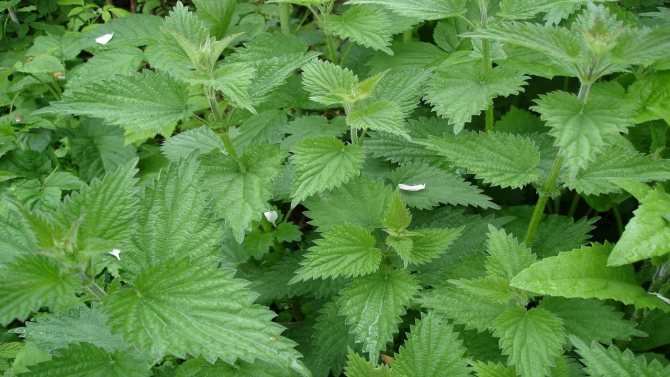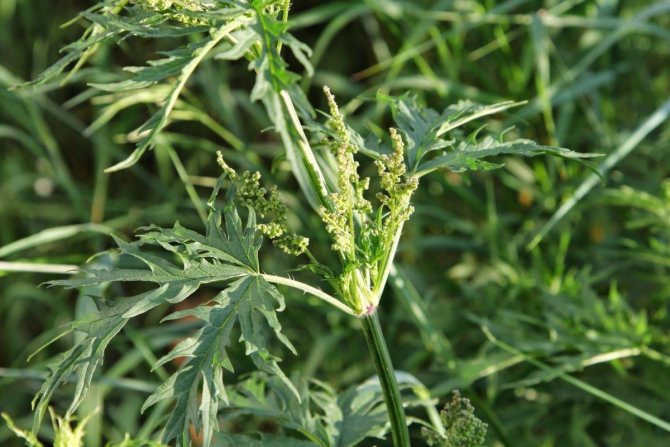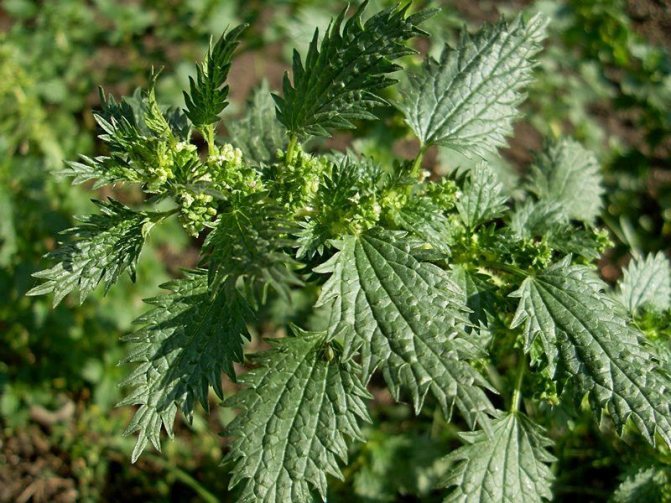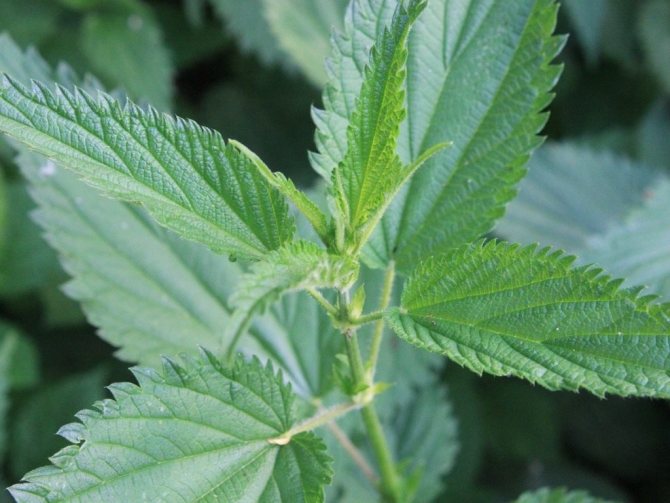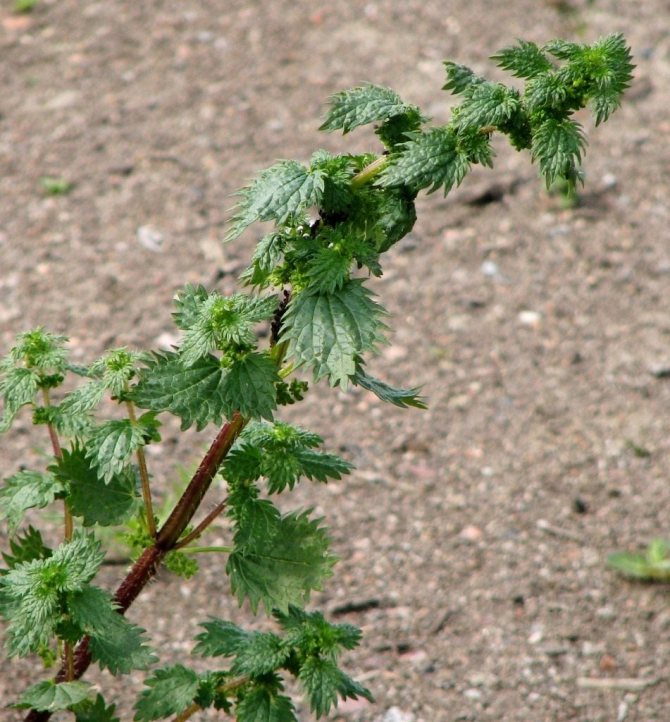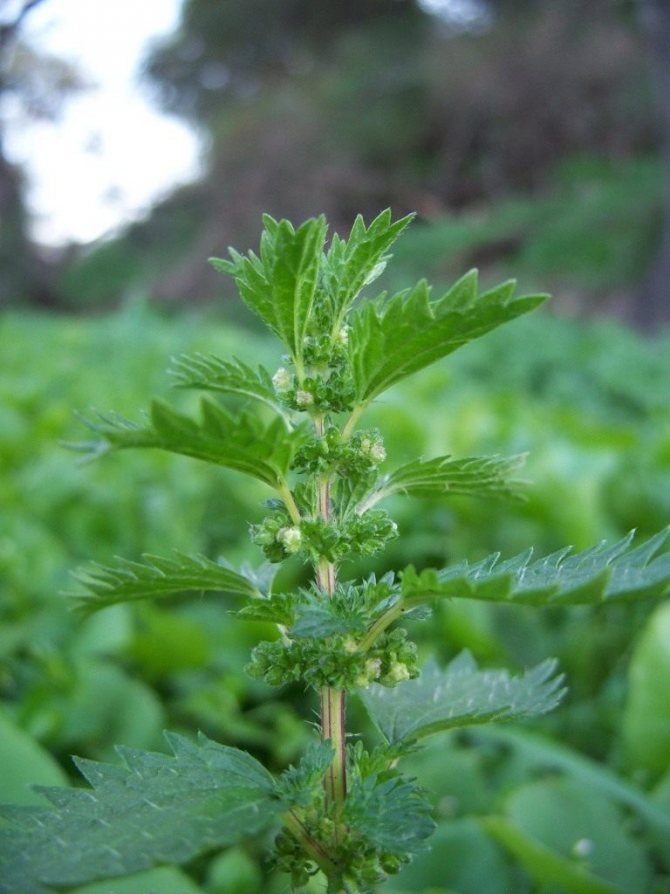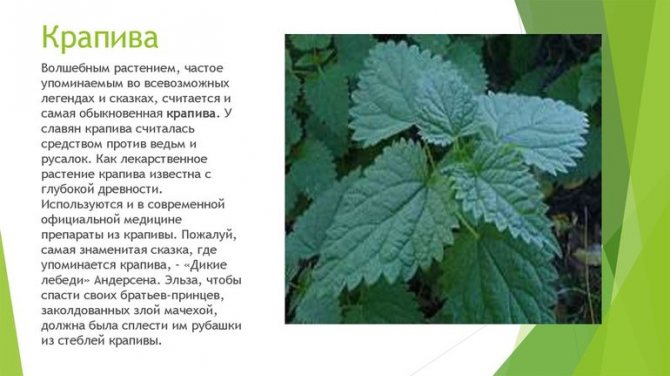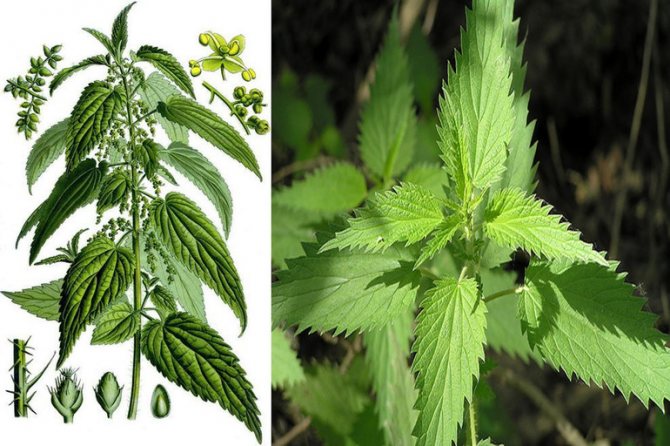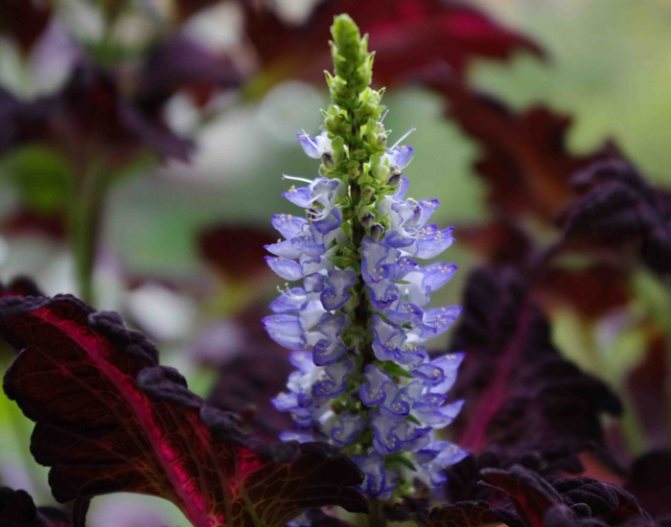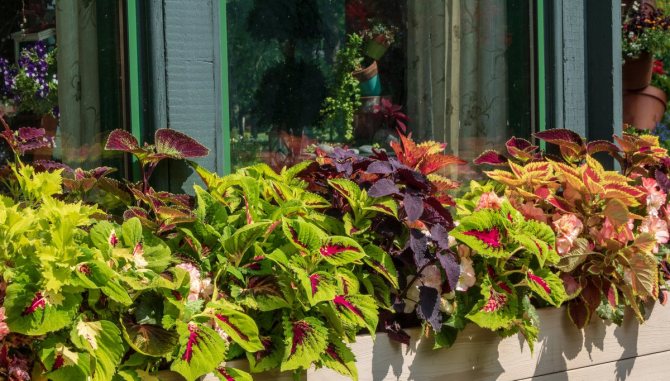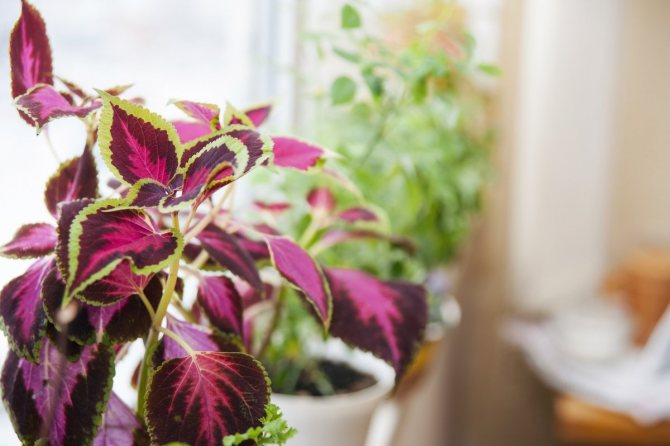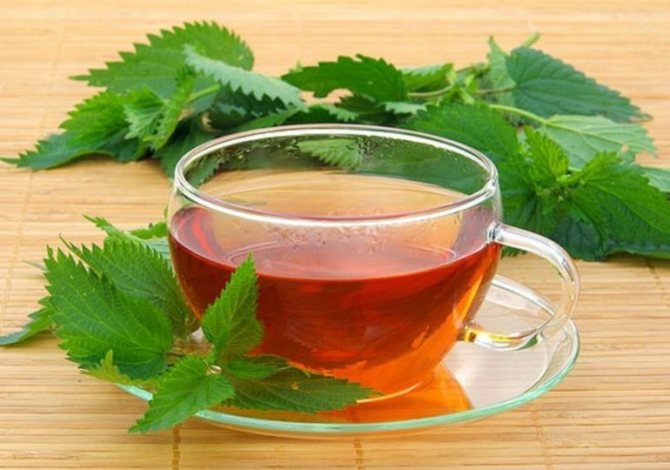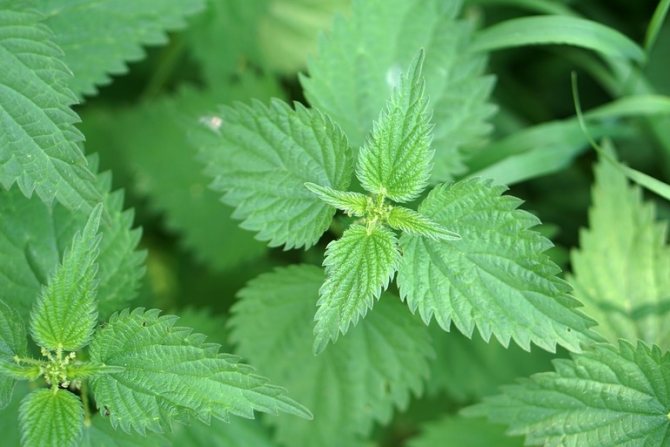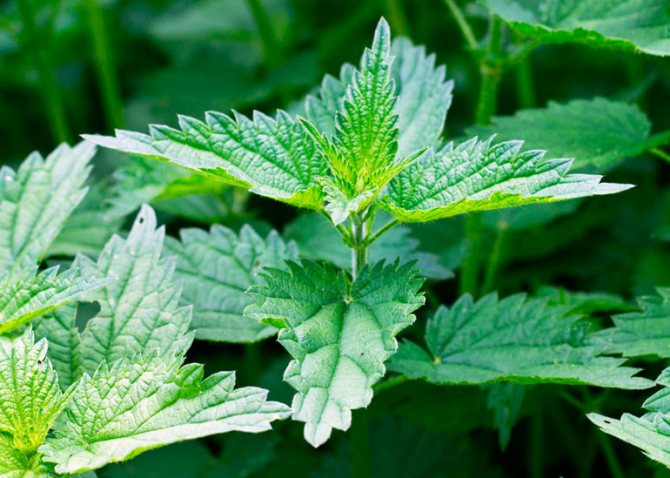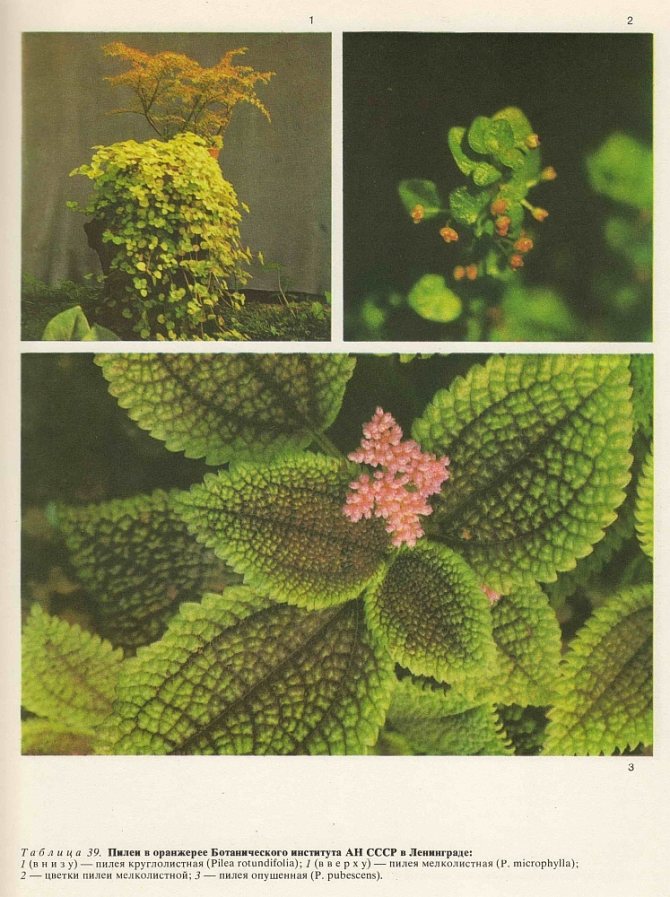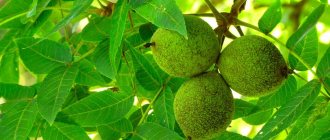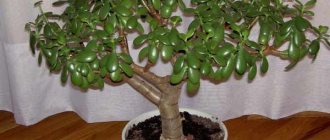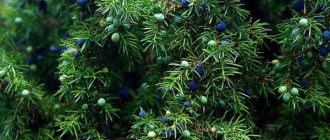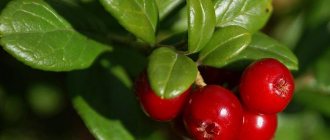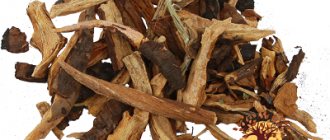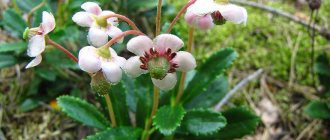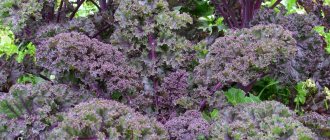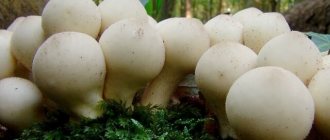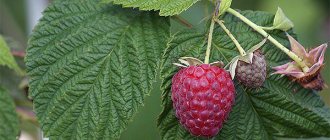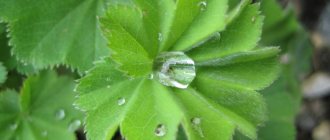Nettle
(
Urtica
) Is a genus of flowering plants of the Nettle family (
Urticaceae
). The stems and leaves are covered with stinging hairs, which gave the Latin name: uro "burn". The genus includes over 50 species. They grow mainly in the temperate zone in the Northern and (less often) Southern hemispheres. Stinging nettle (
Urtica dioica
) and stinging nettle (
Urtica urens
).
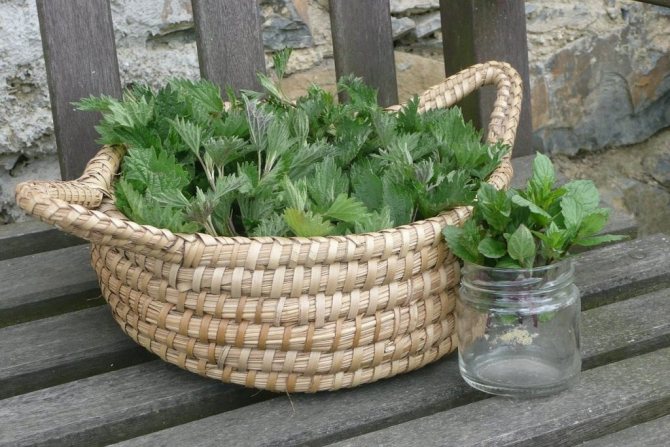
Medicinal properties of nettle. <>
Flowering time.
- June August.
Spread.
- It is found almost throughout the territory of the former USSR.
Habitat.
- It grows along the edges of forests, gardens, bushes, river banks, ravines, wastelands, near dwellings and roads.
Applicable part.
- Leaves and roots with rhizomes.
Collection time.
- Leaves are harvested in June - August, roots - in late autumn.
Chemical composition.
- Stinging nettle leaves contain formic, pantothenic, gallic acids, urticin glucoside, gum, tannins and protein substances, mineral salts, iron, vitamin C (150-200 mg%), various carotenoids (up to 50 mg%), vitamin K (up to 400 biological units per 1 g), vitamin Bg, protoporphyrin, coproporphyrin, sitosterol, histamine, chlorophyll (2-5%) and phytoncides.
- Stinging nettle has a similar composition, but has not been studied enough.
Planting and caring for nettles
- Landing: sowing seeds in open ground - before winter. You can sow in early spring, but before spring sowing, the seeds must undergo a monthly cold stratification.
- Lighting: bright sunlight or partial shade.
- The soil: moist, fertile, preferably sandy, cleared of rhizome weeds.
- Watering: rain, well or spring water as needed.
- Top dressing: in the spring with rotted compost or manure. Nettle does not like mineral fertilizers.
- Reproduction: seeds and division of the rhizome.
- Pests: urticaria butterflies and their caterpillars.
- Diseases: practically not affected.
- Properties: a medicinal plant rich in vitamins and biologically active elements, the leaves of which have anti-inflammatory, hypoglycemic, hemostatic, wound healing, laxative, expectorant, diuretic, tonic and anticonvulsant effects.
Read more about growing nettles below.
Interesting Facts
A short story about the plant helps to understand why it burns the skin. The reason for this effect is the hairs on the surface of the leaves, which contain irritating substances. Most Interesting Nettle Facts:
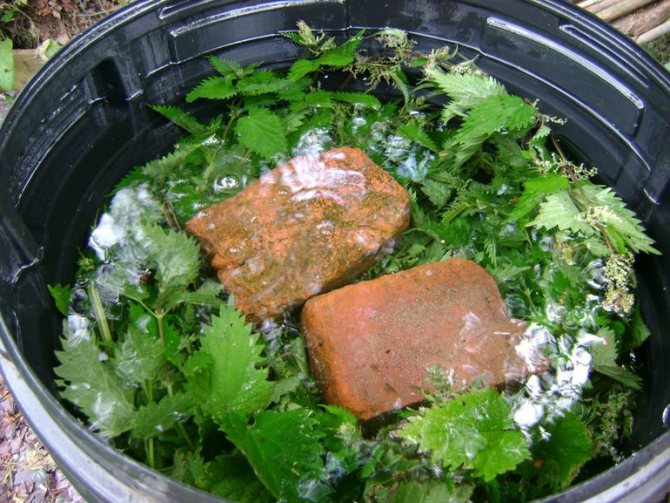

- Nettle burns are quite harmless, they disappear after a few hours without a trace.
- In hot weather, people in some countries use nettles to keep meat and fish fresh.
- Nettle is unpretentious to environmental conditions, therefore it is found in most countries of the world.
- In some countries (for example, in England) the leaves of the plant are used to make a special wine.
- Several centuries ago, people believed that this herb was the creation of Perun, who was the patron saint of the fire element. It was never torn off by hand, only a sharp knife was used.
Nettle is a unique medicinal plant distributed in different countries. With proper use, you can get only benefit from funds based on it and cure various diseases, replenish strength and energy.
Nettle herb - description
Representatives of the genus nettle are monoecious or dioecious annuals or perennials with opposite, whole, serrated, serrate or three to five-cut leaves along the edges. Both the stems and the leaves of the nettle are often covered with stinging bristles. Inflorescences in plants are falsely spike-shaped, consisting of pistillate or staminate flowers. Nettle fruit is a compressed, flat nut, covered with a perianth.
Stinging nettle hair is a large cell resembling a medical ampoule in structure and containing juice, which includes choline, formic acid and histamine. When you touch a hair, its upper part breaks, penetrates under the skin, and the effect of the juice is felt like a sharp burn in the place with which you touched the plant. Usually, nettle burns are harmless, but several tropical species are known, tactile contact with which can even lead to death.
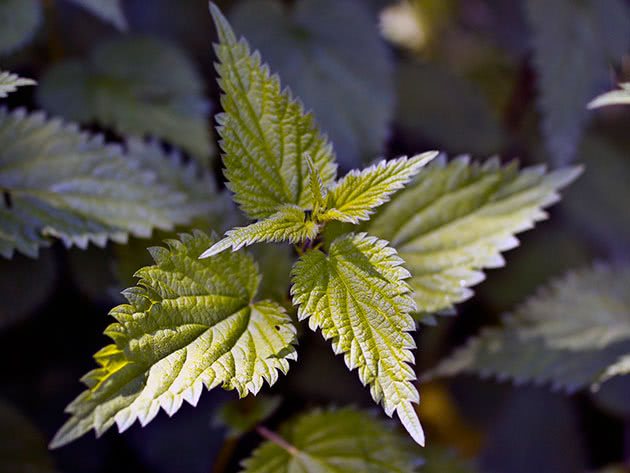

In our country, nettles can be found on wastelands, near fences, along roads, in vegetable gardens, forest clearings, damp meadows, along the banks of reservoirs, in ravines and ditches. Useful properties of nettle dioecious have been known since time immemorial, so today this weed can be found both in household and summer cottages, and in agricultural plots.
- Hawthorn: planting and care in the open field, properties
Signs, superstitions
There are some signs and superstitions associated with Coleus:
- It is believed that a suddenly dried flower portends the illness of one of the family members.
- For good luck at work, the flower should be placed in the workplace.
- It is not advised to keep a flower at home. It is believed that he can provoke financial difficulties, even bankruptcy. It is also believed to be a fire hazard.
- If it bloomed in winter, it means poverty.
- It is not recommended to start such a plant for girls. It supposedly drives away the suitors.
Do not believe these signs, because every event has a reasonable explanation. And blaming an unfortunate, innocent flower for failures is the easiest of all.
Growing nettles
Nettle plant grows well by itself, but nevertheless it develops better in a specially fertilized and prepared area. Nettle is propagated by seed and vegetative methods (segments of rhizomes). Nettle seeds do not need special pre-sowing treatment, however, stratification within a month at temperatures from 0 to 5 ºC can increase their germination by 20-30%.
A perennial plant stinging nettle prefers areas located in partial shade or in the sun with well-moistened fertile or sandy soil, cleared of rhizome weeds. Nettle is sown before winter or early spring: shoots can appear even at a temperature of 8 ºC. The nettle seeds mixed with sand are deepened by 1-1.5 cm, the row spacing is left 60-70 cm wide.After the seeds are sealed, the surface is sprinkled with a layer of peat or humus 5 mm thick and until shoots appear (if sowing was carried out in early spring) the soil on the site keep in a slightly damp state. Seedlings will appear in April (with winter sowing) or in May.
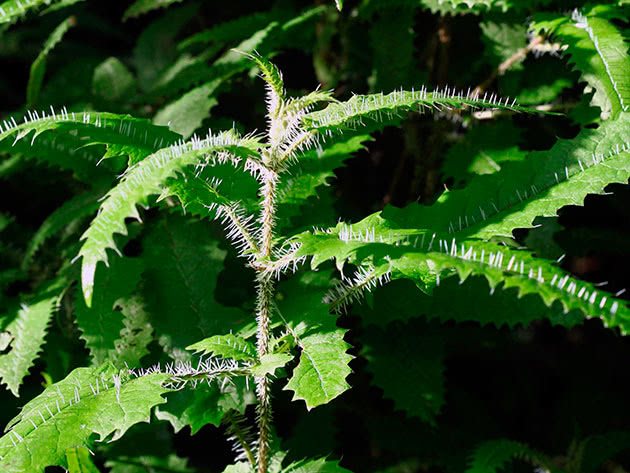

If you prefer to propagate the nettle in a vegetative way, dig up its rhizome in spring, divide it into segments 8-10 cm long and plant them at a distance of 60 cm from each other to a depth of 8 cm.With this method of reproduction, the budding of the nettle occurs a month earlier than with seed ...
Nettle care
At first, the seedlings look weak, develop very slowly, but after two months, intensive growth of the bushes begins: they become branched and lush. It is not difficult to care for nettles, you just need to follow the usual procedures for every gardener: water, loosen, weed and fertilize the soil.
It is better to water the nettle with spring, well or rain water heated in the sun.
Nettle is demanding on the content of nitrogen in the soil, however, it is better not to apply mineral fertilizers to the site. Feed the stinging nettle with rotted compost or manure.
- Hawthorn: planting and care in the open field, properties
As for diseases and pests, nettle is resistant to them. She can only have problems with the urticaria butterfly, the caterpillars of which will have to be collected by hand in June. It makes the work easier because the caterpillars of the urticaria live in clusters, however, when collecting them, do not forget about safety precautions: nettles are very stinging.
Plant features
In summer, you can take it out into fresh air.
Can be grown hydroponically.
The lower leaves turn yellow and fall off - little light.
In the spring-summer period, Coleus should be regularly and abundantly watered with settled water at room temperature, avoiding overdrying the soil. In addition, the plant must be sprayed every day. Feeding with organic and mineral fertilizers is best done once a week. In the autumn-winter period, watering should be reduced, but it is imperative to ensure that the soil is constantly moist.
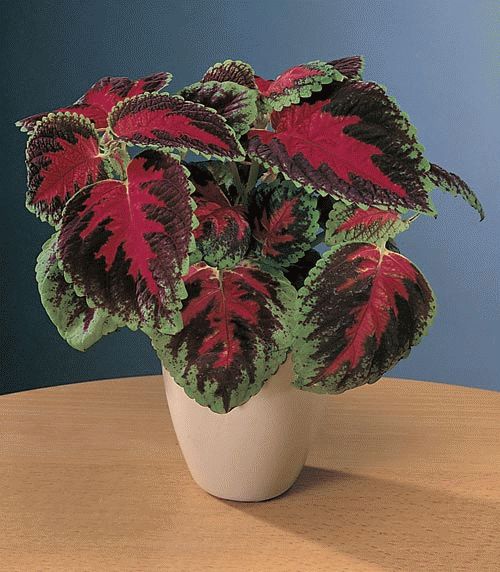

There is no need to feed the Coleus at this time. For planting Coleus, a soil mixture should be prepared, consisting of one part of turf, two parts of humus soil and one part of sand. When planting a plant, it is necessary to make a good drainage layer so that when watering the water does not stagnate at the roots. Excessive moisture can cause them to rot and the subsequent death of the plant. The lush crown of the Coleus needs to be shaped by pruning and pinching.
Photos coleus
Coleus is one of the brightest representatives of the Lamiaceae family. There are about two hundred types of nettles. By the way, Coleus got this name because of its foliage, which resembles a nettle. You can hear another name - the poor man's croton. This nickname is given to the flowers because of the similarity in color. The Coleus has the same bizarre patterns as Croton.
Under natural conditions, Coleus grows in Asia and Africa, where it is used not only as a decorative garden decoration, but also for food. In Russia, only hybrid varieties are on sale, which are suitable only as garden decoration.
Most often, Coleus is grown as an annual crop. In winter, its trunk usually fades, becomes bare, the plant loses its decorative effect. Some people manage to maintain its attractiveness by pruning bare stems. In this case, the flower is transplanted every two years. If the roots are knocked out of the drainage hole, then this is a signal that an urgent transplant is needed.
To do this, use a soil consisting of humus, sod land, sand, taken in a ratio of 2: 1: 1. At the bottom of the pot, drainage from expanded clay, pieces of foam or other material is arranged. Before transplanting, the old soil from the roots is removed as much as possible. During this procedure, all rotten and entwined roots are removed. This should be done as carefully as possible. Then the flower is placed in a new pot and sprinkled with prepared soil.
Planting in the garden involves annual cultivation. Of course, the varieties you like can be brought into the house for the winter, but they rarely take root: they shed their leaves, and soon begin to die completely. To preserve the variety, cuttings are taken and rooted.
Collecting nettles and storing
How to collect nettles
Medicinal raw materials are seeds, leaves and rhizomes of nettle. Stinging nettle leaves are harvested from June to September, during the flowering period. You can cut them off by wearing gloves, or you can mow the grass, wait until not only the leaves, but also the stems wither, and tear off the foliage with your bare hands. The best time to harvest is at dawn on Tuesday in the first quarter of the moon.In any case, the lunar calendars claim that the raw materials collected at this time have a special healing power.
After collecting, the leaves are dried in the shade under a canopy or in the attic, spreading them in a layer 3-5 cm thick on paper or cloth. When dried in the sun, the leaves become discolored and lose some of their medicinal qualities. You can dry nettle leaves in the oven with the door open at 50 ºC. The process is considered complete when the petioles and central veins of the leaves break easily. Sufficiently dried leaves have a dark green color, faint odor and bitter taste. The dry raw material yield is approximately one fifth of the volume collected. Dry raw materials are sorted out, discarding yellowed, blackened, brown leaves and impurities. Store nettles in paper bags or cloth bags in a dry, well-ventilated place, away from sunlight. Shelf life is 2 years.
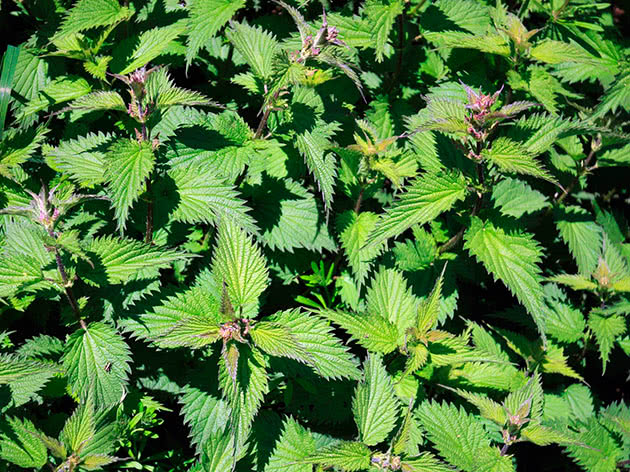

The seeds of stinging nettle and stinging nettle are harvested during their full maturity. This usually occurs about three weeks after flowering ends, in September. The tops are cut off, dried and threshed.
The rhizomes of stinging nettle are dug up in autumn or spring, cleaned of dirt, dried at 40 ºC and stored for 3 years under the same conditions as the leaves.
When harvesting the roots and rhizomes of nettle, the entire plant is destroyed, therefore, while collecting the roots, leave 10-15% of the plants intact on the site for renewal. The next time, it will be possible to harvest roots in this area only in three years.
Varieties of Coleus
Coleus originates from southeast Asia and tropical regions of Africa and distant Australia, and was introduced to Europe relatively recently - in the middle of the 19th century. Since that time, European flower growers began to breed two species of this beautiful plant: Coleus Blumei and Coleus Vershaffelt (coleusvershaffeltii).
The British, as the most enthusiastic breeders, were so successful in this art that after a couple of years they presented as many as 18 new varieties with outlandish brightly colored leaves at a horticultural auction and sold them for fabulous money!
It is noteworthy that to this day, British flower growers cultivate mainly these two varieties of Coleus, and it is with them that they carry out selection work. Russian flower growers liked Coleus Blume, which is sometimes affectionately called nettles - for jagged leaves. On its basis, such a huge number of varieties and hybrids have been created that everyone can choose a plant to their liking.
There are many new, not yet very popular, but extremely spectacular varieties of Coleus:
- Royal Scott - combined cream, red, green, black colors;
- Weasley Flame - with unusual leaves, reminiscent in shape of oak pinkish-peach;
- Weasley Teipestri - with green-burgundy leaves resembling pelargonium leaves;
- Pineapple Beauty - with bright brownish-green leaves, divided in half by color;
- Klondike - with bright yellow leaves with red spots;
- A fire bird - with green leaves with red spots;
- Glory of Luxembourg - the most spectacular variety, with a leaf coloring similar to a stream of molten gold. Leaves are yellow interspersed with orange. A stunningly beautiful flower!
Types and varieties of nettles
Medicinal types of nettles include:
- Hawthorn: planting and care in the open field, properties
- stinging nettle - herbaceous perennial with a powerful root and branched horizontal rhizome. In height, this plant reaches from 60 to 200 cm. All terrestrial organs of stinging nettle are covered with stinging hairs. The shoots of the plant are elongated, the stems are hollow, ascending or straight. The leaf arrangement is opposite to each other. Equilateral simple whole long-petiolate leaves of stinging nettle are dark green in color. They reach 17 cm in length and 8 cm in width.The shape of the plate is oblong, ovate-lanceolate or ovate-heart-shaped, sometimes elliptical with a deep-heart-shaped base. Axillary panicles consist of small unisexual yellowish flowers, staminate and pistillate. The fruits of stinging nettle are biconvex compressed achenes of yellowish or light brown color. One plant can produce up to 22,000 seeds;
- stinging nettle - herbaceous dioecious annual with erect furrowed tetrahedral stems 15 to 35 cm in height, pubescent with rigid glandular hairs. The leaves of plants of this species are dark green, opposite, serrate, covered with stinging hairs, ovoid or oval, from 2 to 6 cm long. Small green axillary flowers, single or collected in a spike-shaped inflorescence, can be pistillate or staminate. The fruit of stinging nettle is a multi-seeded box or nut.
Watering
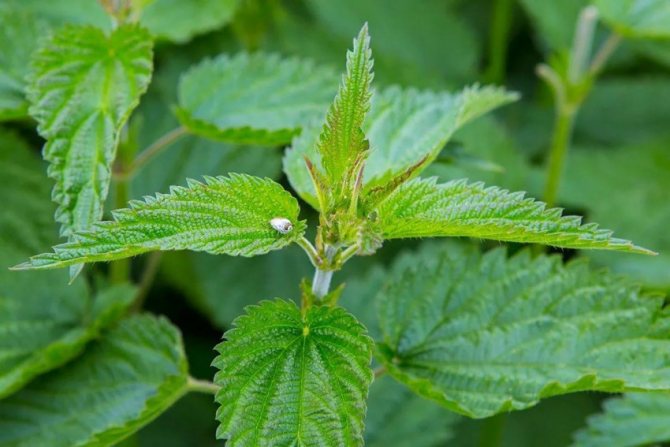

One of the most important elements of home care for Coleus is watering. This plant is very fond of moisture: even a short-term drying out of the soil leads to partial shedding of leaves and a delay in development. Also, nettle does not like excessive watering, and stagnation of water is especially dangerous for its roots. When growing in pots, the excess should be removed from the pallet, and the pot itself should be drained.
For irrigation, it is necessary to use settled water without chlorine. In winter, watering is reduced, but the soil is not allowed to dry out.
Nettle properties - harm and benefit
The healing properties of nettle
Nettle leaves contain: vitamins A, H, C, E and K, B1, B2, B4, B5, B6, B9, niacin, macronutrients chlorine, calcium, potassium, magnesium, phosphorus, sodium, trace elements copper, barium, aluminum , molybdenum, iron, zinc, selenium and manganese. Nettle contains 2 times more ascorbic acid than lemon, and more vitamin A than spinach, sea buckthorn, sorrel and carrots. Nettle also contains tannins, phytoncides, chlorophyll, flavonoids and organic acids - gallic and formic.
Nettle leaves are anti-inflammatory, hypoglycemic and hemostatic. They increase the tone of the uterus, the level of hemoglobin and the number of red blood cells in the blood. They are used in the treatment of liver and bladder diseases, pulmonary tuberculosis, anemia, rheumatism, sciatica and metabolic disorders. It turned out to be effective nettle treatment prostate adenoma and non-infectious chronic prostatitis.
Traditional medicine has recipes for nettle preparations that have wound healing, laxative, expectorant, diuretic, tonic and anticonvulsant properties. Regular consumption of nettle leaves promotes rapid healing of small ulcers and wounds, and infusion of nettle, used for compresses, baths and lotions, prevents hair loss. People have used nettle for hair for a long time: 2-3 tablespoons of dry leaves are brewed with a glass of boiling water, infused for an hour and filtered.
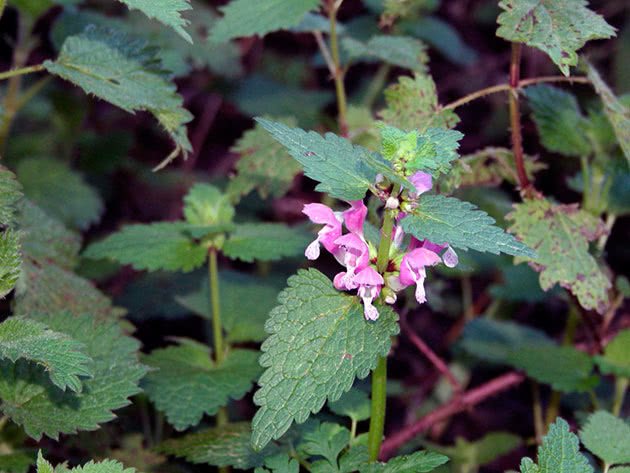

In addition to the infusion, a decoction of nettle is used to improve the condition of the hair. How to brew nettles? Take a tablespoon of dry leaves and crushed dry rhizomes of the plant, pour a glass of water, cook for half an hour, then let cool slightly and rub into the scalp. You do not need to rinse the broth, just blot your hair with a towel.
Nettle can be used to make a wonderful organic fertilizer, which tomatoes are very fond of: healthy stems and leaves are harvested before the seeds appear, put them interspersed with the remnants of baked goods in a large container, filling it only ¾, then pour water with yeast diluted in it, not exceeding the intended level, and leave in the sun for 3-5 days for fermentation, stirring the composition from time to time. Apply ready-made nettle fertilizer once a week.
And finally, we offer you a recipe for nettle soup.Simmer the nettle leaves with white onions in a frying pan in olive oil for 7 minutes. Boil the potatoes separately in salted water until tender, mash them with a blender, keeping the pan over low heat and gradually add butter, cream and milk to the potatoes. At the end, at low speed, stir in the nettle and onion into the puree soup. Serve nettle soup with sour cream or grated gouda cheese. For one and a half kilograms of potatoes, you will need 300 ml of cream, 500 ml of milk, a bunch of nettles, 2 teaspoons of butter. Add salt, pepper, sour cream or grated cheese to taste.
Possible contraindications


Despite the undeniable benefits, a cultivated plant can harm the body if the patient does not take into account the contraindications for its use. The first and most important is grass allergy. It can appear gradually or suddenly, leading to rash, irritation, swelling of the mucous membranes of the larynx and pharynx.
There is information about the detrimental effect of plant-based products on patients who have a tendency to increased blood clotting. It is contraindicated to use the herb for any acute diseases of the kidneys, liver, heart, brain. It is allowed to start the course only after the disappearance of acute symptoms.
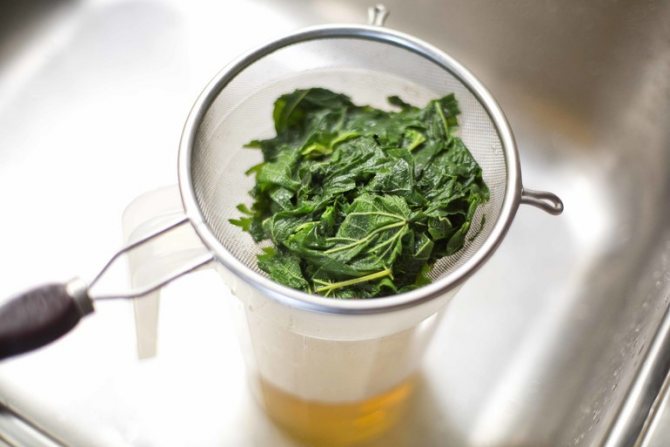

A small child may react negatively to nettle products, so it is allowed to use it only from the age of 12. The period of pregnancy and lactation will also become a contraindication for use. The state of the patient's body plays an important role. For each of them, the dosage and course are different, otherwise complications cannot be avoided.
Diseases of internal organs, accompanied by bleeding and requiring urgent surgical intervention, are also considered a contraindication for the use of nettle for medicinal purposes. The decision to use this herb is made only by a doctor.
Pests: how to deal with them
Medicinal herbs should be grown in order to have the basis for a quick treatment - stinging nettle is specially cultivated for this purpose. It is necessary to determine where the nettle is actively growing so that the environment for its development and formation is suitable. The substances contained in the plant negatively affect most pests that can enter the garden. That is why it is included in the composition of fertilizers or compost, which is then used to improve the composition of the soil (for flowers, cucumbers and other cultivated plantings). Everyone knows what nettles look like visually, so letting them grow in a specific area can then be used for benefits. The popular name for growing nettles is stinging, since formic acid is present.

